Hoof trimmer: Brian Begert Location: 500-cow dairy in Wisconsin Case study: Heel ulcer with a hairy hoof wart attack Chute style: Upright
Technique:
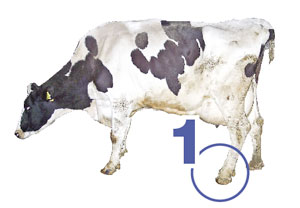
1. I visit this dairy every two weeks. On this dairy, we normally trim at dry-off and 100 days in milk. This cow missed her routine trimming.
She hadn’t been trimmed for 10 months and has been housed in a six-row, sand-bedded freestall barn stocked at 150 percent.
She is moderately to severely lame in her left-rear hoof.
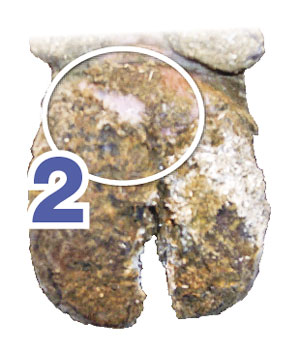
2. The outer claw or lateral claw is normally wider than the inside claw or medial claw.
Notice the redness and swelling above the heel. There is more swelling on the left than the right.
This indicates the problem is most likely in the left claw. The inside and outside heels are also moderately imbalanced in thickness.
She’s putting more pressure on the outside claw than the inside and needs to be corrected.
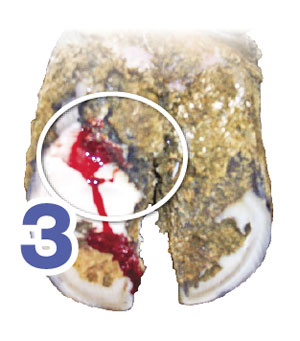
3. Trim the right claw to correct length and angle.
Trim the left claw to the correct length and thickness, taking off more hoof in the heel to balance them and distribute her weight evenly between the two heels.
By doing so, the heel ulcer appears.
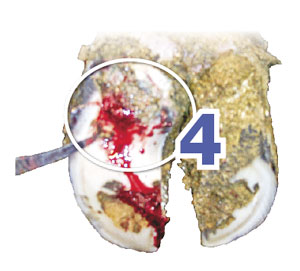
4. Notice how the hairy wart has undermined the horn and began growing on the corium.
The heel ulcer probably started from walking on imbalanced heels and lots of standing.
Inconsistent use of a proper footbath program allowed the hoof warts to invade the ulcer.
This is extremely sore and sensitive to the touch. Remove loose horn from the ulcer site.
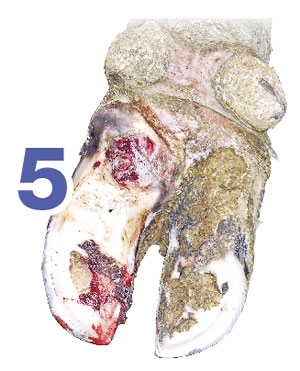
5. The lesion is completely trimmed out, removing loose horn and lowering the heel as much as possible, to put more weight on the right heel.
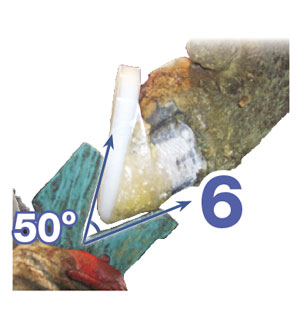
6. Apply a plastic block at a 50-55-degree angle, as shown here.
This will keep more weight on the cows’ toes instead of the heel. This will speed her recovery.
I use a plastic block instead of an oak block because it won’t wear off prematurely.
With this dairy’s coarse sand bedding, a wood block would wear off in about four weeks.
She should be rechecked on the next visit to make sure the hairy attack is dead.
If it is still there, remove any loose horn again and rewrap the lesion, making sure to remove it after two days. The block should be adjusted or removed after 6 weeks if she has healed.
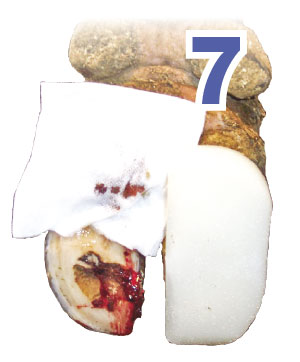
7. I apply a gauze pad soaked in Quickhit to stop any bleeding.
Once the bleeding stops I use another gauze pad and put a sugar and iodine cream mix on it.
Then I put tetracycline powder and more Quickhit on top of the “sugardine” mix and then apply it to the lesion.
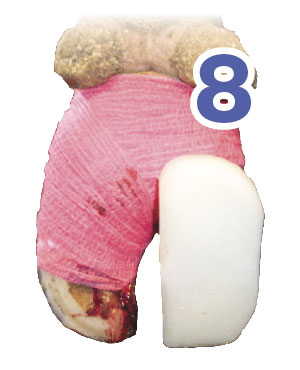
8. Wrap the hoof over the gauze pad. The wrap should be removed within two days.
If her hoof had just a heel ulcer without the hairy attack, it should not be wrapped, so that any pus can drain out.
The wrap is to try to kill the hairy attack.
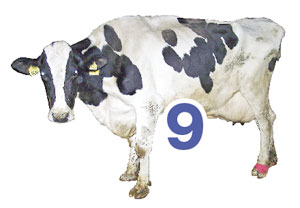
9. This cow has since recovered but has scar tissue above the bulb of the heel and around the coronary band.
Brian and his wife, Kari, own and operate Begert Hoof Care, LLC, in Neillsville, Wisconsin.
Brian has been trimming for 13 years and is a graduate of Dairyland Hoof Care Institute’s regular and advanced courses. EL





